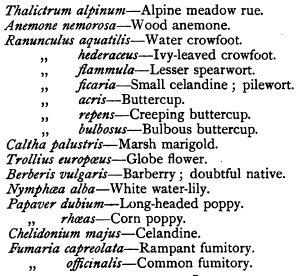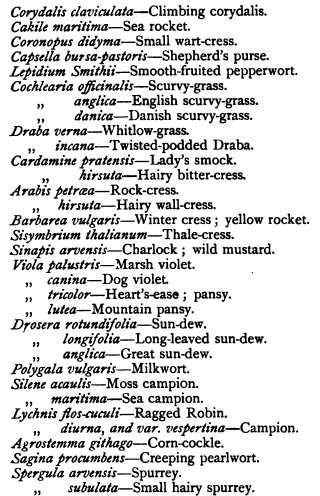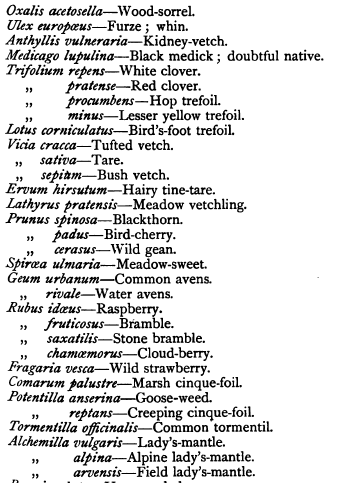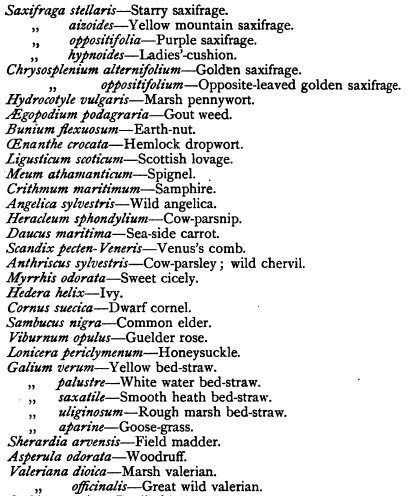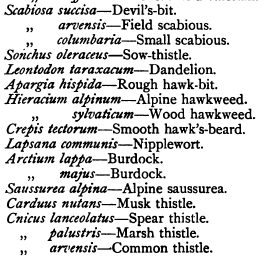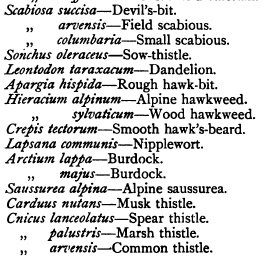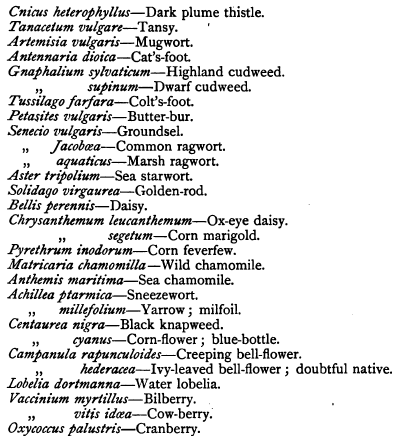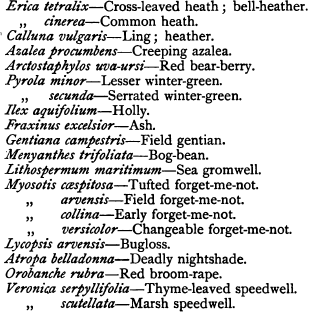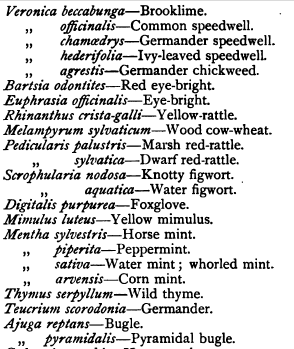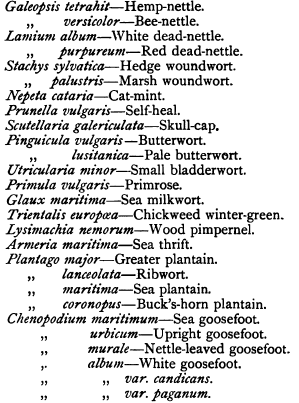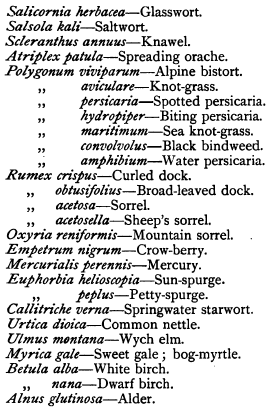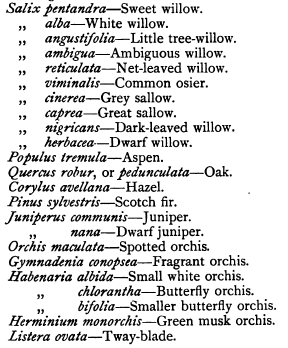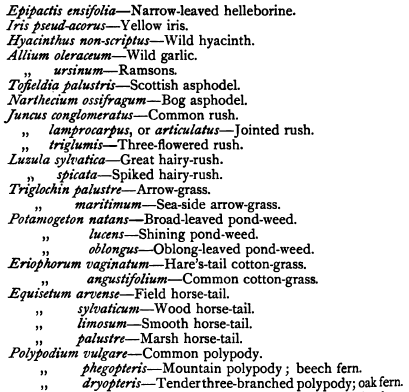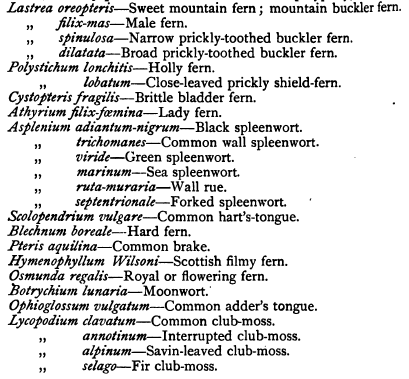IT is matter of regret that no adequate herbarium has been prepared for
Gairloch. With the aid of I^ady Mackenzie of Gairloch, Mrs Fowler of
Inverbroom, Mr O. H. Mackenzie, Mr A. Davidson, and other helpers, a list
has been compiled, and is appended to these notes. It is imperfect, but we
hope that it may lead to a more accurate and complete account of the flora
of the parish.
Visitors to Gairloch are invited to add to our list, and
any botanical information they may be willing to impart will be received
with thanks. But they are appealed to to abstain (when searching for
plants) from anything like a trespass or an infringement of the privileges
of others. Thoughtlessness on the part of a few, may bring discredit on
botanists generally.
Searchers for wildflowers are further entreated,
not to eradicate any plant that may be found,—nay, not even to greatly
reduce its dimensions ; remembering that others ought to be allowed the
chance of observing it, and that it is unfair to rob a country of its
charms. Two instances are given in our " Introduction " of the destruction
of ferns by tourists. Surely a word to the wise is sufficient.
The
larger and more showy of our woodland plants, as well as of many kinds
that should flourish on the edges of moors and about cultivated land, have
become rare, and in some cases have altogether disappeared, since the
introduction of sheep-farming into Gairloch. Not only do the smearing
materials applied to sheep poison the ground, and being washed down into
streams check the multiplication of trout, but the close nibble of sheep
deteriorates pasture, and destroys many succulent plants. In spring,
before the grass on the hills has made any growth, the sheep everywhere
attack the primroses, so that no early blooms can be found except among
wet places and rocks. The ewes and lambs are often kept near home until
summer has set in, and one can almost fancy that they have a special taste
for the choicest flowering plants. Dr Mackenzie attributes the present
scarceness of wildflowers to the appetites of sheep, and all who have
considered the question entirely concur in this opinion. Dr Mackenzie,
writing of the first quarter of the nineteenth century, says, " The braes
and wooded hillocks were a perfect jungle of ever)' kind of loveable
shrubs and wildflowers, especially orchids, some of the epipactis tribe
being everywhere a lovely drug."
Most of the best flowers are now only
met with on steep banks, among rocks, by road sides, on soft boggy ground,
by the sea-shore, or in other localities not much frequented by sheep. The
epipactis ensifolia, formerly abundant, is now almost unknown in Gairloch.
In June 1883 I discovered a specimen on a stony bank by water. In 1885
there were two plants at the same place. I have not seen it elsewhere, nor
had Mr O. H. Mackenzie seen it until this plant was found.
Most of the
gayest wildflowers are over by the time the run of tourists begins. Many
of the loveliest bloom in June or early in July. A bouquet of wildflowers,
well arranged in masses, does not stand long in water, but is difficult to
beat for graceful forms and exquisite tones of colour. The yellow iris,
the rosy sea-thrift, the purple orchis, the orange St John's wort, the
ragged robin, the blue hyacinth, and the lilac valerian, are eminently
fitted to display the taste of the fair florist.
Though many beautiful
flowers have disappeared before September, yet in autumn the country
becomes brilliant with a fresh supply. The moors are purple with heather
and ling, and also teem with the orange-coloured bog asphodel, whilst the
patches of corn are ablaze with the brilliant yellow corn marigold so
popular for bouquets. From March to October each month has its peculiar
gems, and this Highland parish yields not only the rare alpine plants of
the mountains, but many equally prized treasures of the rocks and strands
that edge, the sea lochs. There are also several interesting plants that
abound in fresh-water lochs, such as the white water-lily, the
water-lobelia, and the bog-bean.
Of the rarer plants found in Gairloch
the following are perhaps worthy of special note, viz., the narrow-leaved
helleborine, the long-leaved sun-dew, the pale butterwort, the purple
saxifrage, the stone bramble, the cloudberry, the cranberry, the water
avens, the chick-weed wintergreen, the arrow-grass, the trollius, the
water lobelia, and several uncommon ferns.
The following list includes
the indigenous trees and all the ferns I know; several plants are doubtful
natives, such as the corn-poppy and corn-cockle. The order of arrangement
is that adopted in Sowerby's "British Wildflowers" :—
Flowering Plants of Gairloch
